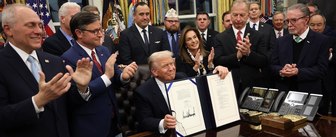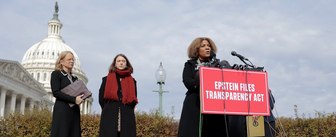The post-Thanksgiving surge in COVID-19 cases hasn’t had much impact on how Americans respond to the virus.
Nearly three in four Americans (72%) in the latest Economist/YouGov poll believe national cases are rising, and a majority (56%) believe cases are rising in their own communities, but there is little evidence that these opinions changed much after the Thanksgiving holiday. The partisan divide continues: Republicans are less worried than Democrats about personally contracting the virus and less likely to see cases rising in their own communities and in the country overall.
Will the Christmas holidays change anything? It may have already. Less than half of adults (46%) say they will celebrate the holidays with others this year. Four years ago, nine in ten said they celebrated the holidays in some way, though not necessarily with other people. Those who will not be celebrating with others this year are more likely to be older than 65 (49%), and more likely to be African-American (55%). Republicans (60%) are 20-points more likely than Democrats (40%) to be celebrating with others this year.
There will be more celebrating with others in the Midwest (53%) than in any other region.
One in four holiday celebrants will travel to another town to celebrate, with more than half of those travelers (15% of all celebrants) set to head to another state. In addition, most will be celebrating with people outside their immediate household – with friends and extended families. Just 27% of those who will be celebrating with others will only be spending time with their own households.
Democrats (45%) are much more likely than Republicans (18%) to celebrate only with other household members.
More than half of all celebrations (54%) will include someone 65 years or older.
Americans are aware of the potential that holiday travel could increase COVID deaths. Half (51%) expect that there will be additional deaths resulting from holiday travel, including one in three who expect to travel themselves. How many deaths? Half think the holiday travel will mean at least 10,000 additional deaths, and more than one in four expect there could be as many as 50,000 deaths.
Two in three Americans live in communities where there are at least some COVID-related restrictions. They are twice as likely to want to see those restrictions made stricter (44%) than to have them loosened (22%).
That isn’t true for Republicans, who are nearly twice as likely to want to loosen restrictions as strengthen them. Age matters too. Younger adults support more restrictions, with older adults less convinced.
The partisan gap continues on nearly all questions about the pandemic. As the post-Thanksgiving surge continues (this week, the US. set a record for the largest number of deaths in one day), the Director for the Centers for Disease Control and Prevention warned that the winter could be the “most difficult time in the public health history of the nation.” However, fewer than half the public believe the worst of the pandemic is yet to come, with a 39-point party gap between Democrats and Republicans as they look ahead.
More than half the public, 56%, are aware that COVID-19 cases are rising in their own communities, while 72% agree national cases are spiking. Republicans are less likely than the public overall to agree there are local and national spikes.
Related: The economy matters, and for many, the president is responsible
See the toplines and crosstabs from this Economist/YouGov Poll
Methodology: The Economist survey was conducted by YouGov using a nationally representative sample of 1,500 US Adults interviewed online between December 6 - 8, 2020. This sample was weighted according to gender, age, race, and education based on the American Community Survey, conducted by the US Bureau of the Census, as well as 2016 Presidential vote, registration status, geographic region, and news interest. Respondents were selected from YouGov’s opt-in panel to be representative of all US citizens. The margin of error is approximately 3.3% for the overall sample.
Image: Getty








